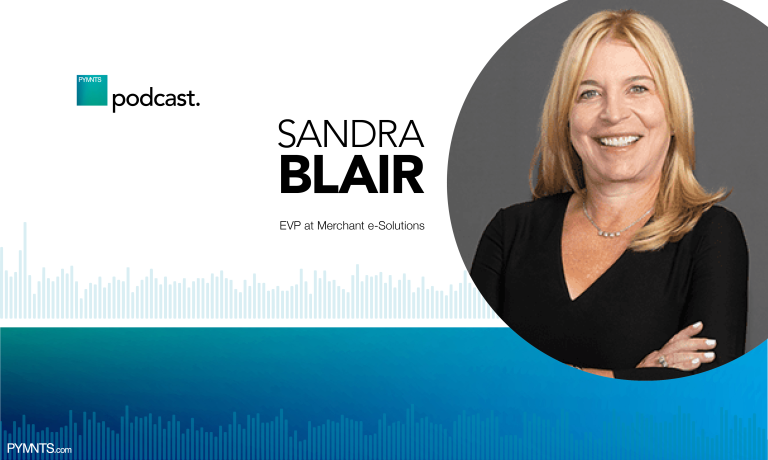We’ll be happy, all of us, to leave 2020 in the rearview mirror. But for payments, the new year will dawn with a combination of disruption and innovation.
To that end, as MerchantE Executive Vice President and Chief Product Officer Sandra Blair said in an interview with Karen Webster, the future of payments in 2021 brings omnichannel commerce to the forefront, where merchants still interact with people face to face, or online-only, or a combination of the two … but with constants: embedded payments (which benefit consumers and B2B interactions alike) and, for merchants, same-day funding.
Capturing Resilient Consumer Spending
At a high level, the consumer is proving resilient (and Blair noted that even B2B spend, across the MerchantE platform, has been on the upswing).
“In some cases, the physical point of sale terminal is still necessary, but that’s not where all the flow is going,” said Blair, as ultimately the consumer determines the endpoint where he or she receives goods and services.
But the pandemic has starkly illuminated the need for flexibility, especially in verticals where online spend has been strong and where commerce has shifted to online channels from brick-and-mortar foot traffic. Embracing innovation can be a boon for industries that were seeing growth even before the pandemic. Blair pointed to grocers as an example, where business models have embraced curbside pickup, which is here to stay.
Advertisement: Scroll to Continue
Against the backdrop, merchants need to accommodate the shifts online, Blair told Webster, wherever they may lead. They need tools to help handle the challenges to day-to-day working capital and cash flow management.
Used strategically, online platforms like that of MerchantE – and tech-driven ways to get paid, such as via cards (and even via text) – can help smooth top lines and cash flow.
Easier said than done, of course. Webster remarked that merchants need to have a “risk-free proposition” in place to fully embrace new funding flow. Simply making those options available to merchants is not, on its own, enough. Analytics that were not on merchants’ radar screens as recently as a year ago are suddenly timely.
As is same-day funding, which has been pushed to cards.
Blair noted that same-day funding – which, per MerchantE, allows companies to tap cash flows almost immediately – may not be top of mind for companies, simply because they’re not (yet) aware that such options can be accessed across platforms in the first place. Thus, some outreach is in order, she said.
“We need to educate them,” Blair said of those merchants. “And I think the biggest thing they’ve been surprised by is that they can get their funds on a Saturday or Sunday.”
That seven-day-a-week availability of fund flows is especially useful for companies such as restaurants, where inventory can ebb and flow, or staffing levels and tips can wax or wane (and where keeping cash on hand and on site can be an occupational hazard).
As companies seek to find new ways to embrace the digital age, payments must be an embedded part of the process — but not a friction-filled one, Webster and Blair agreed.
Embedded and connected commerce, said Blair, is finding a perch in displacing the paper check in B2B, where the platform model is proving to be valuable. Having payments on offer – built into solutions, rather than choosing software and then adding payments functionality – can reduce operational complexity.
“Whether it’s electronic invoicing … to be able to do everything online and then have that ‘pay now’ button, whether it’s in AP or AR — those are complex transactions,” Blair noted. To get buyers and suppliers to make the digital shift, MerchantE has found it necessary to explain to corporate clients just how expensive checks can be –and how operationally risky in the age of the pandemic (and not to mention slow, as they are reliant on the vagaries of the postal system).
“It’s a holistic picture that you need to put together for them, but they are certainly more receptive today than they would have been maybe eight months ago,” Blair said of the B2B space, as stakeholders recognize that digital change needs to happen.
“Even though we’re a processor, we’re trying to think more like an ISV and make sure that payments are already built-in. And so all of those decision points and complexities are taken out of the equation,” she added.
As for payments speed: Blair contended that although various networks and schemes — such as from TCH and FedNow — will bring real-time payments to companies, using the existing rails remains the easiest path.
In the short term, she said, conducting B2B disbursements through push-to-card technology will be embraced more widely (especially as transaction limits are increased). There’s room for legacy technology, in other words — it might not be the fanciest solution, but the financial services ecosystem has been built on it, and it’s been tried and tested and true.
Looking ahead, Blair said that on the other side of the pandemic, “there will be a lot of innovation that comes out of COVID-19. Wherever there’s disruption, there will be innovation.” Firms are going online, and they will not revert to taking checks and doing everything face-to-face.
“There’s going to be an interesting combination of wanting to have human interactions, but then having the actual payments and technology do the work behind the scenes,” she told Webster.

